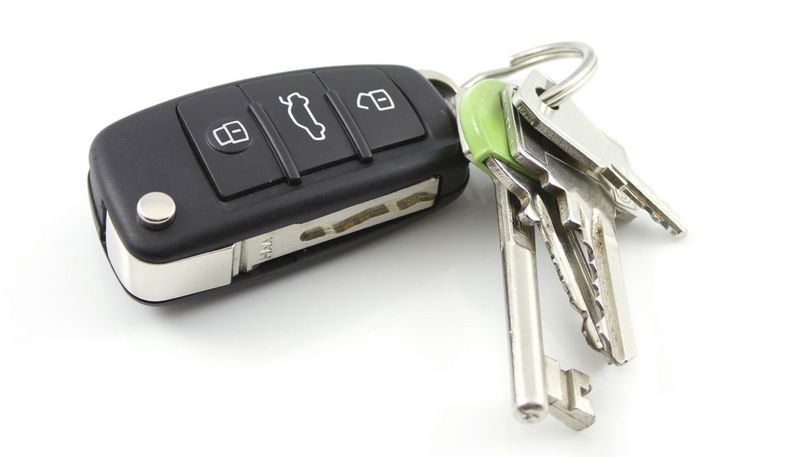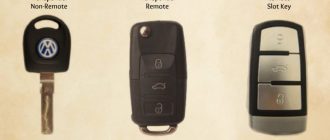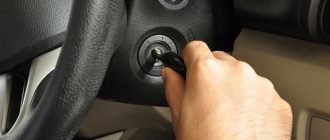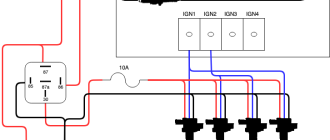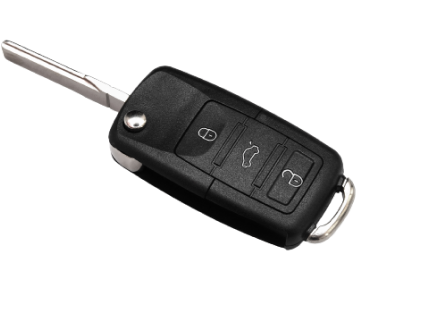
Car Key Types. What Is The Difference
Keys are an essential part of everyday life for car owners. They allow us to start our cars, lock and unlock them, and access various features and functions. However, not all car keys are created equal. There are several different types of car keys, each having their own unique features and capabilities.
One key difference between various car key types is the technology used. While traditional car keys are simple metal objects that physically engage with the car’s ignition and locks, modern car keys often incorporate advanced electronic technology. These electronic keys can communicate with the car’s onboard computer system wirelessly, allowing for keyless entry and ignition.
Another key difference lies in the level of security offered by different key types. Traditional car keys can be relatively easily duplicated, which can pose a security risk. On the other hand, electronic keys often incorporate advanced encryption and authentication technology, making them much more difficult to duplicate or forge. This added security can provide car owners with peace of mind.
Understanding the differences between various car key types is important for car owners, as it can help them make informed decisions about their car’s security and functionality. Whether you have a traditional key or a modern electronic one, knowing the capabilities and limitations of your car key can ensure that you use it effectively and prevent any potential issues or complications.
Conventional Car Keys
Conventional car keys are the traditional, non-electronic keys that have been used for many years. They typically consist of a metal blade that is used to manually unlock and start the car. The key may have a plastic head for easy grip and identification.
One of the main differences between conventional car keys and other types of keys is the lack of any electronic components. This means that conventional keys do not have any embedded chips or transponders that communicate with the car’s immobilizer system. Instead, the key works by physically turning the ignition lock cylinder and starting the engine.
Conventional car keys are often simple and easy to duplicate. They can be quickly and inexpensively copied at a hardware store or locksmith. However, this also means that they offer less security compared to keys with more advanced technology, as they are more susceptible to theft and unauthorized duplication.
Despite their limitations, conventional car keys are still widely used today, especially in older car models or in situations where simplicity and cost-effectiveness are prioritized over advanced security features. They are also commonly provided as a spare key when purchasing a new car.
Remote Keys
Remote keys are a type of car key that allows the driver to remotely lock and unlock the car doors without using a physical key. These keys are also equipped with additional features such as a panic button or a trunk release button. The remote key works by transmitting a unique code to the car’s receiver, which then activates the locking or unlocking mechanism.
There are different types of remote keys available for cars, each with their own differences:
- Single-function remote keys: These remote keys have a single button that can be used to lock or unlock the car doors.
- Multi-function remote keys: These remote keys have multiple buttons that allow the driver to perform a variety of functions, such as locking and unlocking the doors, opening the trunk, or activating the panic alarm.
- Proximity keys: Also known as keyless entry or smart keys, these remote keys allow the driver to lock or unlock the doors simply by being in close proximity to the car. The car’s locking and unlocking mechanism is automatically activated when the proximity key is detected.
The main difference between remote keys and other types of car keys is the ability to control the car’s locking and unlocking mechanism from a distance. This added convenience makes remote keys a popular choice for many car owners.
Transponder Keys
A transponder key is a type of car key that has a built-in transponder chip. This chip allows the key to communicate with the car’s immobilizer system, ensuring that only the correct key can start the car. The chip emits a unique code that must match the code stored in the car’s system for the engine to start.
The main difference between a transponder key and a traditional car key is the presence of the chip. Traditional keys are made of metal and have no electronic components. They work by physically turning the ignition cylinder, which then starts the car. Transponder keys, on the other hand, require electronic communication between the key and the car’s immobilizer system in order to start the engine.
Transponder keys provide an added level of security compared to traditional keys. The unique code emitted by the chip ensures that only a key programmed to that particular car can start it, making it difficult for thieves to hot-wire the vehicle.
Smart Keys
Smart keys are advanced car keys that use radio frequency identification (RFID) technology to communicate with the car’s immobilizer system. These keys provide a higher level of security compared to traditional car keys and offer convenient features for the car owner.
One of the main differences between smart keys and traditional keys is that smart keys do not require physical contact with the ignition cylinder to start the car. Instead, they use a proximity sensor that detects when the key is near the car. This allows for a keyless start system where the car can be started with a push of a button.
Smart keys also have additional features such as keyless entry and push-button locking/unlocking of the car. This means that the car can be locked or unlocked by simply pressing a button on the key fob, without having to insert and turn a physical key in the door lock.
Another advantage of smart keys is that they can be programmed to store personalized settings for different drivers. This includes adjusting seat positions, rear-view mirror angles, and audio system preferences. When a driver with their own smart key approaches the car, the car automatically adjusts to their preferred settings.
In terms of security, smart keys use encryption technology to prevent unauthorized access to the car. The RFID chip in the key fob communicates with the car’s immobilizer system, and only if the correct signal is received will the car start. This makes it difficult for thieves to clone or mimic the key.
Overall, smart keys offer a convenient and secure way to start and operate a car. With their keyless entry and personalized settings, they provide a modern and user-friendly experience for car owners.
Keyless Entry Systems
Keyless entry systems are a modern innovation in the automotive world that eliminates the need for a traditional car key. Instead of using a physical key to unlock and start the car, keyless entry systems rely on advanced technology to provide convenience and security.
The main difference between a traditional car key and a keyless entry system is that the latter uses a remote control or a fob to unlock and start the car. This fob is equipped with a small chip that communicates with the car’s onboard computer system. When the fob is within a certain range of the car, it sends a signal to the computer system, which in turn unlocks the doors and allows the car to be started.
Keyless entry systems offer several advantages over traditional car keys. Firstly, they provide convenience by eliminating the need to physically insert a key into the car’s door or ignition. This saves time and effort, especially when you have your hands full. Secondly, keyless entry systems enhance security. The unique chip in the fob makes it difficult for thieves to replicate the signal, reducing the risk of car theft.
Additionally, some keyless entry systems offer features such as remote engine start and keyless ignition. With remote engine start, you can start your car from a distance, allowing it to warm up or cool down before you enter. Keyless ignition eliminates the need to insert a key into the ignition switch; instead, you simply push a button to start and stop the engine.
Overall, keyless entry systems provide a convenient and secure way to access and start your car without the need for a traditional key. As technology continues to advance, we can expect to see further innovations in car key systems.
Key Fobs
A key fob is a small remote control device that is typically used to lock and unlock a car. It is also commonly used to start the engine of the car. Unlike traditional keys, key fobs use radio frequency identification (RFID) technology to communicate with the car’s security system.
Key fobs come in different shapes and sizes, depending on the car manufacturer. Some key fobs are small and can easily fit in your pocket, while others are larger and may have additional features, such as a panic button or a remote start function.
The main difference between key fobs and traditional keys is the way they are used to start the car. With a traditional key, you insert it into the ignition and turn it to start the engine. With a key fob, you don’t need to physically insert the key into the ignition. Instead, you simply need to have the key fob in your possession, and the car’s ignition system will automatically recognize the presence of the key fob and allow you to start the engine.
Key fobs are convenient and provide an added level of security. Since they use RFID technology, it can be more difficult for a thief to steal a car that uses a key fob, compared to a car that uses a traditional key. Additionally, some key fobs have advanced security features, such as encrypted communication between the fob and the car’s security system, making them even more secure.
Proximity Keys
A proximity key, also known as a smart key or keyless entry system, is a type of car key that allows the driver to unlock and start their vehicle without having to physically insert the key into a lock or ignition. Instead, the key communicates wirelessly with the car’s system, allowing for convenient and easy access.
One of the main differences between proximity keys and traditional car keys is the way they are used. With a proximity key, as long as it is within range of the car, the driver can simply press a button on the door handle to unlock the car. Similarly, to start the car, the driver typically just has to press a button on the dashboard or steering column.
Proximity keys use a combination of radio frequency identification (RFID) and low-frequency electromagnetic fields to communicate with the car’s system. The key contains a small chip that emits a signal, and the car’s system recognizes this signal and responds accordingly. This technology not only provides convenience but also enhances the security of the vehicle.
Another advantage of proximity keys is that they often include additional features such as remote start, which allows the driver to start the car’s engine from a distance. Some proximity keys also have a feature that allows the driver to automatically adjust their preferred seat and mirror positions.
| Wirelessly unlock and start the car | Physically insert the key into a lock or ignition |
| Convenient and easy access | Requires manual unlocking and starting |
| Increased security | Lower security |
| Additional features such as remote start | No additional features |
In conclusion, proximity keys offer a convenient and secure way to unlock and start a car. With their wireless capabilities and additional features, they have become a popular choice among car owners.
Blade Keys
Blade keys are a type of car key that have a metal blade attached to them. This blade is used to physically turn the ignition switch and start the car. Blade keys come in different shapes and sizes, depending on the make and model of the car.
The main difference between blade keys and other types of car keys is that they do not have any electronic components. This means that they do not contain a transponder chip or remote control features. Blade keys are typically used in older car models or basic entry-level cars.
When using a blade key, the driver needs to manually insert the key into the ignition switch and turn it to start the car. Unlike newer key types, blade keys do not have the convenience of remote keyless entry or the security of an immobilizer system.
While blade keys may lack the advanced features and security of newer key types, they are generally more durable and less prone to electronic malfunctions. They also tend to be less costly to replace if lost or damaged. However, it’s important to note that as car technology advances, blade keys are becoming less common and being replaced by more advanced key types.
Flip Keys
A flip key is a type of car key that has a unique design and functionality compared to other types of keys. It is named “flip key” because it can be flipped open and closed, resembling a small pocket knife. This feature allows the key to be compact and easily portable.
One of the main differences between flip keys and traditional keys is the way they are used. To use a flip key, the user must press a button on the key fob to flip the key open, revealing the mechanical key blade. This blade is then inserted into the ignition lock to start the vehicle.
Flip keys also often come with additional features such as remote keyless entry and keyless start. These features allow the user to lock and unlock the car doors remotely, as well as start the engine without physically inserting the key into the ignition.
Overall, flip keys offer convenience and functionality that sets them apart from other types of car keys. Their compact design and additional features make them a popular choice for many car owners.
Valet Keys
A valet key is a type of car key that is specifically designed for valets or other temporary users of your vehicle. It is typically a limited-function key that can only be used to start the ignition and unlock the car doors, but it cannot be used to access the trunk or any other locked compartments. This key is often distinguished by its different color or design, which helps to easily identify it as a valet key.
Valet keys are useful when you need to give someone access to your car, but you want to restrict their ability to access certain areas of the vehicle. For example, if you are visiting a valet parking service or leaving your car with a mechanic, you can use a valet key to ensure that they can only drive the car and cannot access your personal belongings in the trunk.
Valet keys are commonly used in hotels, restaurants, and other places where valet parking is available. The limited functionality of these keys helps to protect the owner’s privacy and security, as well as preventing unauthorized access to the car’s contents. If you have a valet key, it is important to keep it separate from your regular keys to avoid confusion and potential misuse.
Laser-Cut Keys
A laser-cut key is a type of car key that is cut using a laser machine, giving it a precise and intricate design. This type of key is commonly used in newer vehicles and offers an increased level of security compared to traditional keys.
One of the main differences between laser-cut keys and other types of car keys is the way they are cut. Laser-cut keys are cut using a laser machine, which allows for a more precise and accurate cut. This results in a key that is unique to your vehicle and is much harder to duplicate.
Another difference is the level of security offered by laser-cut keys. The intricate design and precise cut of these keys make them much more difficult to pick or replicate. This adds an extra layer of protection for your car, helping to prevent unauthorized access.
Laser-cut keys are also typically more expensive to replace compared to traditional keys. This is due to the technology and materials used in their production. However, the added security and peace of mind they provide may be worth the extra cost.
If you own a car that uses a laser-cut key, it is important to keep it in good condition and prevent any damage. Unlike traditional keys, laser-cut keys can be more sensitive and may require regular maintenance. It is also important to keep a spare key in case of emergencies or if you happen to lose your primary key.
In conclusion, laser-cut keys are a type of car key that offer increased security and precision compared to traditional keys. They are cut using a laser machine, making them harder to duplicate and pick. While they may be more expensive to replace, their added security features make them a popular choice for many car owners.
Immobilizer Keys
An immobilizer key is a type of car key that includes a built-in transponder chip. This chip is programmed with a unique code that is recognized by the car’s immobilizer system. When the key is inserted into the ignition, the immobilizer system sends a signal to the transponder chip to verify its authenticity. If the code matches, the car will start.
The main difference between an immobilizer key and a traditional car key is the added security feature. The immobilizer system prevents the car from starting if an incorrect key or an unauthorized key is used. This makes it much more difficult for thieves to steal a car, as they would need to have the correct immobilizer key with the programmed code.
It is important to note that if you lose your immobilizer key or it gets damaged, it can be more expensive to replace than a traditional car key. This is because the immobilizer system needs to be reprogrammed to recognize the new key. It is recommended to have a spare immobilizer key in case of emergencies.
Key Cards
Key cards are a type of car key that use radio frequency identification (RFID) technology. They are also commonly referred to as key fobs or keyless entry remotes. Key cards offer keyless entry, allowing drivers to unlock and lock their cars with the push of a button.
One of the main differences between key cards and traditional keys is that key cards do not have a physical blade or cut. Instead, they rely on the RFID technology to communicate with the car’s locking system. When the button on the key card is pressed, it sends a signal to the car’s receiver, which then unlocks or locks the doors.
There are different types of key cards, each with its own features and compatibility. Some key cards may also have additional functions, such as remote start or trunk release. Key cards are commonly used in upscale car models, as they provide convenience and a sleek design.
- RFID technology for keyless entry
- No physical blade or cut
- Offers convenience and a sleek design
- Some key cards may have additional functions
In conclusion, key cards are a modern type of car key that use RFID technology for keyless entry. They offer convenience, a sleek design, and may have additional functions. With no physical blade or cut, key cards provide a different approach to car security and access.
Emergency Keys
In a car, an emergency key is a special type of key that is designed to provide limited access to the vehicle in case of emergency situations. These keys are different from regular car keys and are typically used in situations where the primary key is lost or locked inside the vehicle.
Emergency keys are usually smaller and simpler in design compared to regular car keys. They often do not have any electronic components, such as buttons or transponders, and are instead used primarily to unlock the car manually or start the engine. Because of their simplified design, emergency keys are also usually cheaper to produce than regular car keys.
While emergency keys can provide a quick solution in emergency situations, it is important to note that they may not offer the same level of convenience as regular car keys. For example, emergency keys may not have features such as remote keyless entry or keyless start, which are commonly found in modern car keys.
In conclusion, emergency keys are a different type of key used in cars for emergency situations. They are simpler and cheaper in design compared to regular car keys, and may not offer the same level of convenience and functionality. It is important for car owners to understand the differences between emergency keys and regular car keys and be prepared for emergency situations that may require the use of an emergency key.
Comparison of Car Key Types
Car keys come in different types, each with its own set of features and functions. Understanding the differences between these key types can help you choose the right one for your needs:
- Traditional Keys: These are the most basic type of car keys. They are typically made of metal and have ridges or teeth that match the lock mechanism of the car. To start the car, you insert the key into the ignition and turn it.
- Key Fobs: Key fobs are small electronic devices that allow you to lock and unlock your car remotely. They often have buttons for other functions like opening the trunk or activating the panic alarm. Some key fobs also have a traditional key blade that can be used to manually unlock the car if the battery dies.
- Smart Keys: Smart keys are advanced key fobs that use radio frequency identification (RFID) or near field communication (NFC) technology to communicate with the car’s ignition system. They typically do not have a physical key blade and can be used to start the car by simply pressing a button.
- Keyless Entry Systems: Keyless entry systems allow you to lock and unlock your car without using a key or key fob. Instead, they use sensors and wireless technology to automatically detect the presence of an authorized key and unlock the doors when you approach the car.
Each type of car key offers its own level of convenience and security. Consider your needs and preferences when choosing the right key type for your car.
Q&A:
What are the different types of car keys?
There are several different types of car keys, including traditional metal keys, transponder keys, key fobs, and smart keys. Each type of key serves a different purpose and offers different features.
What is a transponder key?
A transponder key is a type of car key that has a small electronic chip embedded in it. This chip sends a unique signal to the car’s ignition system, allowing the car to start. Transponder keys offer an added level of security and are commonly used in newer vehicles.
What is a key fob?
A key fob is a small device that is either attached to a keychain or can be used independently. It typically has buttons that can lock and unlock the car, as well as perform other functions such as opening the trunk or sounding the alarm. Key fobs use radio frequency signals to communicate with the car’s locking system.
What is a smart key?
A smart key, also known as a proximity key or push-to-start key, is a high-tech key that uses a combination of radio frequency identification (RFID) and near-field communication (NFC) technology to unlock and start the car. Smart keys are typically sleek and do not require physical contact with the car to operate.
Are traditional metal keys still used?
Yes, traditional metal keys are still widely used today. While newer cars often come equipped with more advanced key types, many older vehicles and some newer models still rely on traditional metal keys for ignition and door lock access.
What are the different types of car keys?
There are several types of car keys, including traditional keys, transponder keys, key fobs, and smart keys. Each type serves a different purpose and has unique features.
What is a traditional car key?
A traditional car key is a basic key that is used to manually unlock and start a vehicle. It does not have any additional features and is the most basic type of car key.

